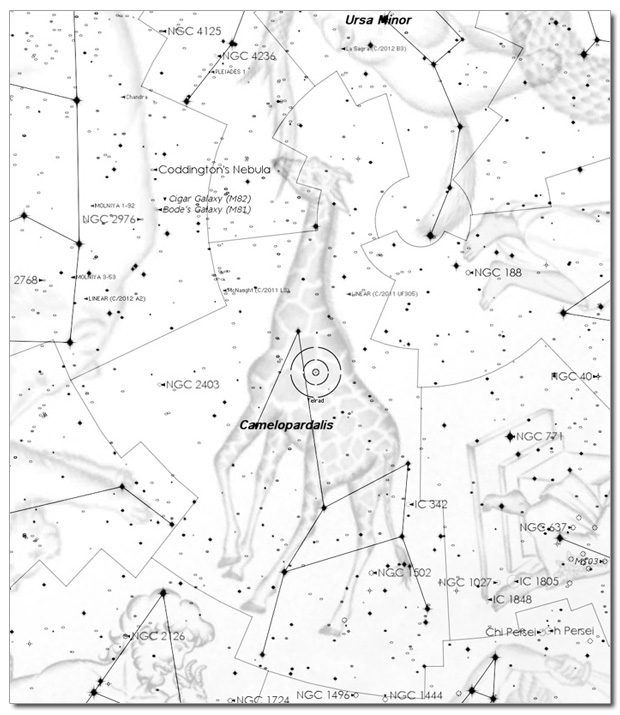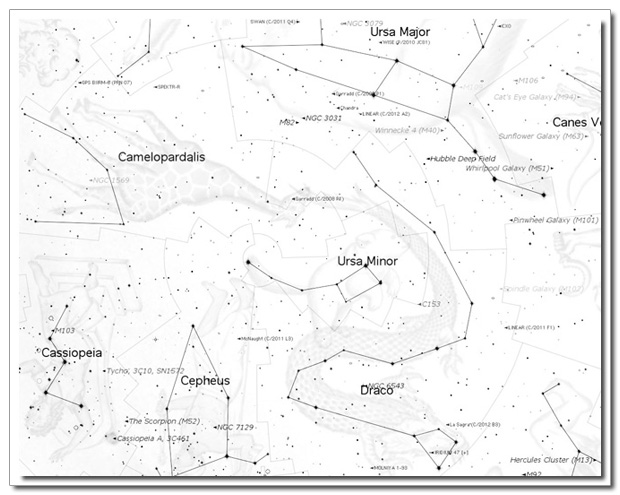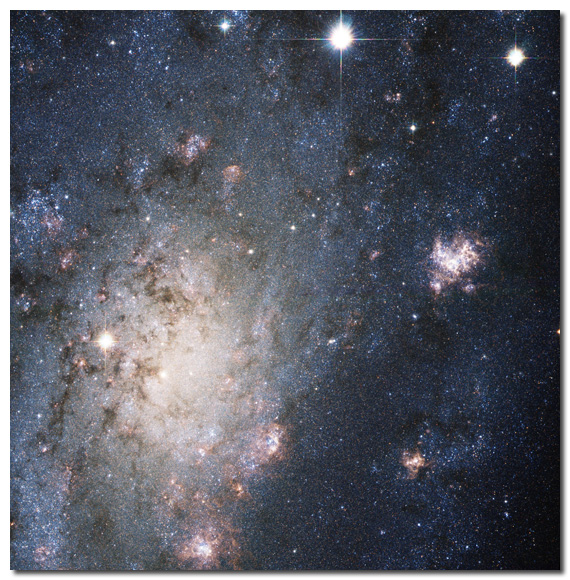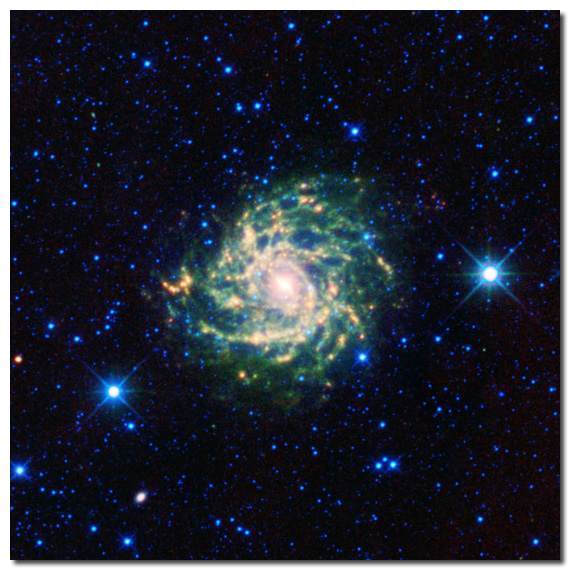As first appeared in the June 2012 edition of the Syracuse Astronomical Society newsletter The Astronomical Chronicle.
Image generated with Starry Night Pro 6. We continue our presentation of CNY circumpolar constellations with a relative newcomer to the great list of 88 constellations (in Western Culture, anyway). Camelopardalis the Giraffe is lucky to be identified as a constellation at all, as neither the Greeks nor the Romans saw this part of the sky as interesting enough to, dare I say, stick their necks out and define the stars here as anything of importance. Its Western history dates to approximately 1612, when the famed Dutch astronomer and cartographer Petrus Plancius (who also provided us with Monoceros, another recent constellation in the Northern Hemisphere) grouped the stars with the name Camelopardalis which, loosely translated, breaks down into "camel" and "leopard," the combinations of "long neck" and "spots" being a reasonable first approximation to the features of an animal most of Europe had likely never seen at the time. The Chinese and Indian astronomers, on the other hand, were far more meticulous in their use and definition of stars in the Night Sky and the brighter stars in Camelopardalis are all defined in one asterism or another. The positions are obviously the same, but the history and mythology of the stars in Camelopardalis are markedly different.
Referring back to the main image in my first article on circumpolar constellations (Ursa Minor, Jan/Feb/Mar 2012, above), that vast majority of Camelopardalis lies above the Northern Horizon, with its head region tightly packed between the boundaries of Draco and Ursa Minor. I've seen several stick figure representations of Camelopardalis that attempt to depict only the legs (from the brightest stars in the constellation), only the legs and torso (by cutting Camelopardalis off at the knees and connecting these two starts to make a body), only the legs and half the neck (using bright stars again), the legs and full neck (getting a head in there as well), and the full-on head-neck-torso-short-leg variation that looks most like a giraffe but, likely, deviates most from classical definitions. The correct line drawing for you is, of course, the one that helps you identify the constellation easiest.
During the June mid-evenings, Camelopardalis is oriented with its feet standing firmly on the Northern Horizon (perhaps with its legs obscured behind tall trees that serve as celestial underbrush during our observing sessions). With no star brighter than 4th magnitude and most in the 4th to 5th range, one does have to work a bit harder than usual to mark out the legs and torso of Camelopardalis from Darling Hill, as the electromagnetic diaspora emanating from Syracuse consumes an ever-increasing expanse of the Northern Sky (a solution, then, is to simply observe from somewhere comfortably North of Syracuse!). As you check for the neck, consider the head of Camelopardalis reaching for the bowl of the Big Dipper. The brightest star near where the head would be, the appropriately named "HIP47193," will sit just to the left of Polaris for your early-night June observing.
Neither the Greeks, nor the Romans, nor most any Western Culture, nor Charles Messier or his assistant Pierre Méchain found anything of importance to amateur astronomers among the stars we know as Camelopardalis. It took until the 18th century for William Herschel to identify an object worthy of cataloguing in the forms of the sort-of elliptical/sort-of spiral galaxy NGC 2403 (shown above, from Hubble). We now know that this region of the sky contains many interesting, but faint, observables, some of which lie within the Milky Way (such as the planetary nebula NGC 1501 and the open cluster NGC 1502) and many which lie far, far beyond, all likely visible only because they lie away from the galactic plane of the Milky Way (and, therefore, are identifiable because they are in a relatively barren stellar savannah that doesn't obscure our view). Among these are NGC 2655, IC 342 (shown below in infrared from NASA WISE), and NGC 1569 (all exceptionally tough targets due to Syracuse light pollution).
– Happy Hunting, Damian



